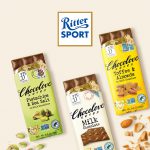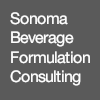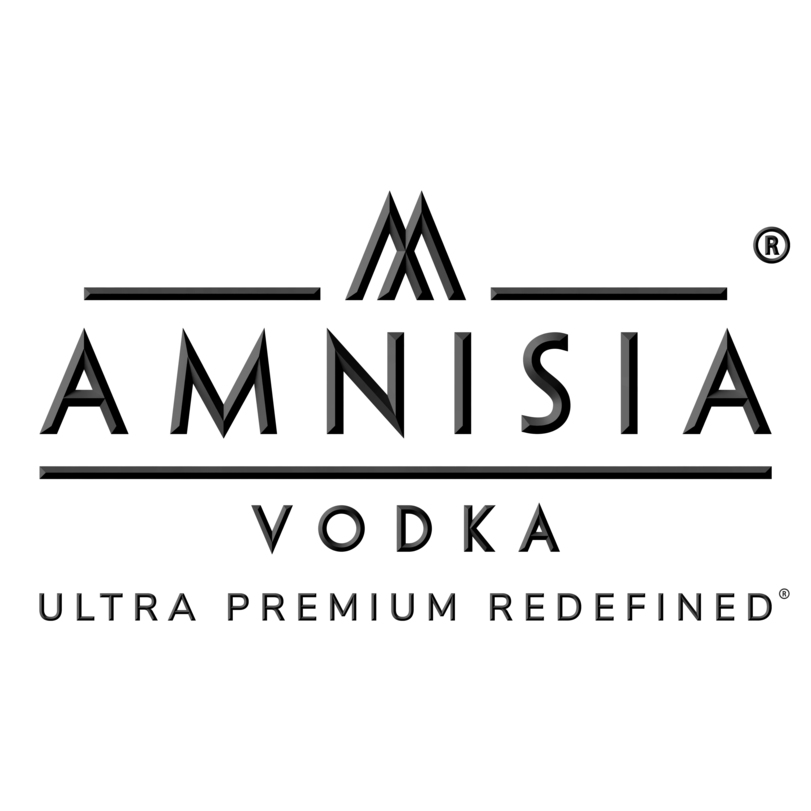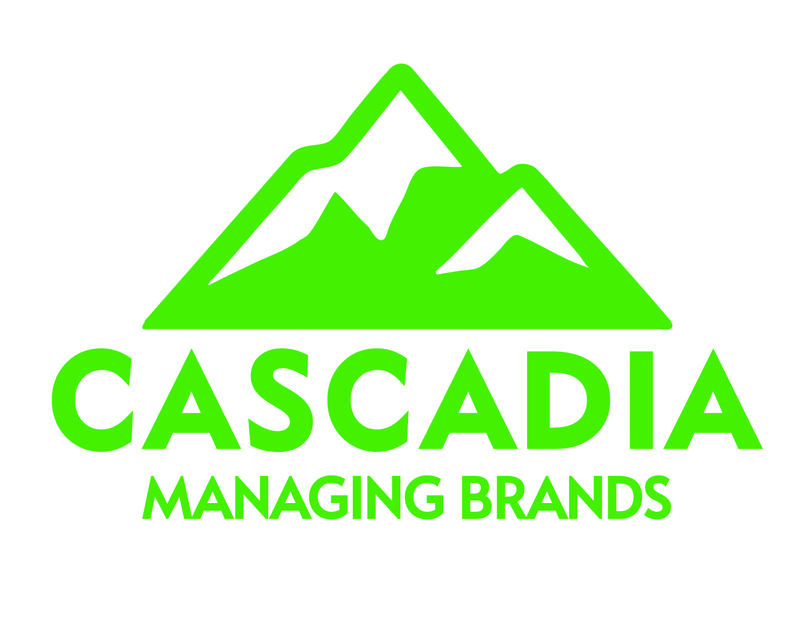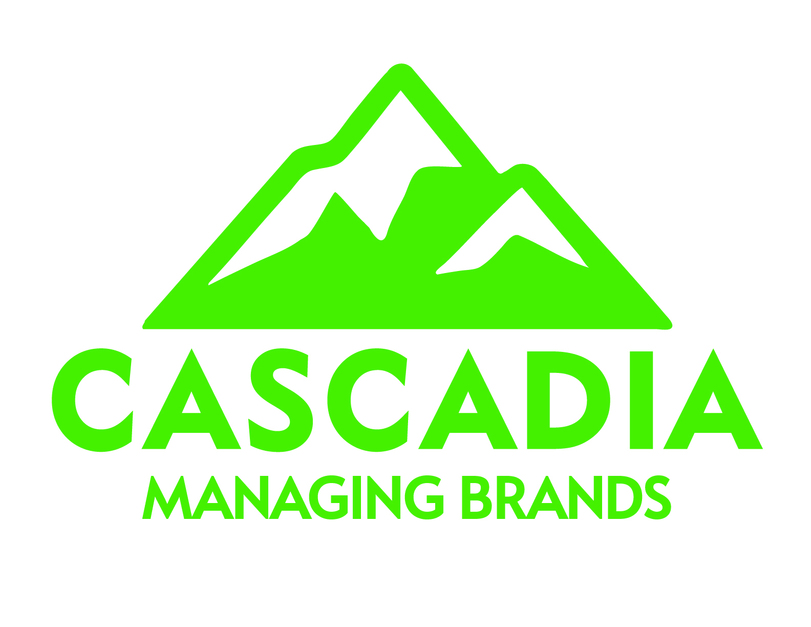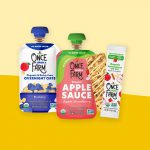IRI: COVID-Driven Demand for Convenience, At-Home CPG Remains High Despite Inflation

Over two years into the pandemic, demand for CPG products has changed to reflect consumers’ need for convenience, while high inflation has fueled increased demand for self-care and wellness products, according to an IRI webinar earlier this week.
Analysts from IR predicted that pandemic buying trends in CPG will continue into the next year as consumers prioritize convenience and value during a period of high inflation. In response, CPG companies will need to reduce category assortment, offer fewer promotions and continue to market core products to customers as supply slowly stabilizes.
Before the pandemic, convenience used to mean on-the-go and ready-to-eat meals. Now, it means quick-prep, at-home meals that are easy to clean up, said Krishnakumar Davey, president of client engagement at IRI.
“The definition of convenience is evolving. It has become a key motto as many of us are juggling working from home and also raising our families,” he said.
IRI reports that “better-for-you” products like prepared salads, refrigerated appetizers, and both unflavored and flavored water were already growing before the pandemic and have continued to see increased demand. Consumers have grown accustomed to remote or hybrid work conditions and value the convenience of healthy food and beverage choices that are easy to access and cook.
Products with functional ingredients like sports drinks, juice smoothies, vitamins and supplements have seen about a 10% growth in the last two years, reported IRI. CPG companies are leaning into these wellness products that offer enhanced hydration, protein, electrolytes and clean ingredients.
Will inflation change pandemic buying trends?
For many consumers, and low-income households in particular, price increases in CPG are already having an impact. IRI reported that low-income households contributed 26% of household sales and 68% of the growth in the 52 weeks ending March of 2022.
“When we surveyed these (low-income) households, they were noticing all the price increases and beginning to bring in more value items from shopping, looking for more sales, cutting back on essentials, looking for deals, buying store brands and just switching to value retailers,” Davey said.
Yet premium and super premium products still enjoy strong demand, which rose during the pandemic as people got financial support from the government. Inflation has decelerated that momentum a little, but analysts at IRI believe that these products will continue to grow in the long-term, especially with consumers’ increased reliance on e-commerce and buying clubs for premium items.
Mainstream and value items made up about 55.6 percent of the edible CPG market in the first quarter of 2022, while premium and super premium made up 25.7 percent.
Not only are prices increasing, but the assortment of products is narrowing as well. Shelf-stable juices, cream cheese, frozen potatoes, dry pasta and crackers are some of the categories that face assortment challenges in 2022, but for the squeeze is happening for slightly different reasons compared to early into the pandemic. .
“We have seen in the last four or five months, that the item counts are starting to drop again,” said Alastair Steel, partner of growth consulting at IRI. “Part of what’s driving this is supply rates are driving down the items carried, but also manufacturers have discontinued certain items to focus on their core items.”
CPG companies will adapt manufacturing and marketing strategies to succeed
Looking ahead to future supply chain challenges, IRI analysts noted that flexibility will be key for both manufacturers and retailers, while CPG brands will need to lean heavily on consumer shopping data and analytics to be successful amidst high inflationary pressure.
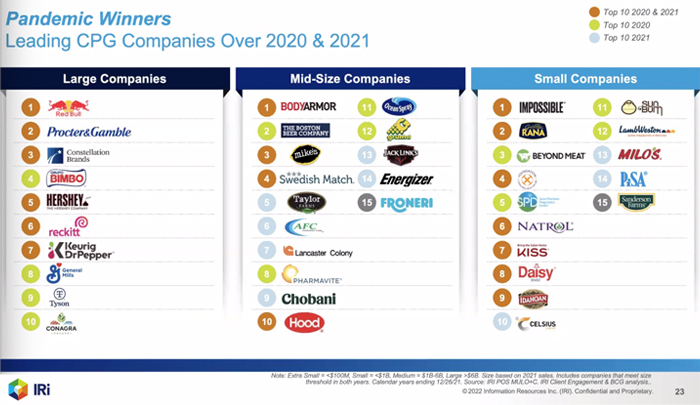
Even as freight and ingredient costs challenge CPG companies, dynamic supply chains will allow manufacturers and retailers to adapt to disruptions and control costs while meeting customers’ demand.
Inflation’s impact on consumer behavior is expected to continue into 2023, obliging CPG companies to continue to justify their respective value propositions to consumers . In that context, higher quality at-home meal solutions could be marketed as a substitute for dining out, and smaller indulgent or premium products positioned for an at-home experience could attract new customers.
One strategy that continues to show success throughout the pandemic has been embedding the brand into the consumer experience at-home as well as the communities that people live in, said Cara Loeys, principal of executive insights at IRI. For example, Hershey’s shifted to share packs and s’mores kits to cater to families looking for more eating experiences.

